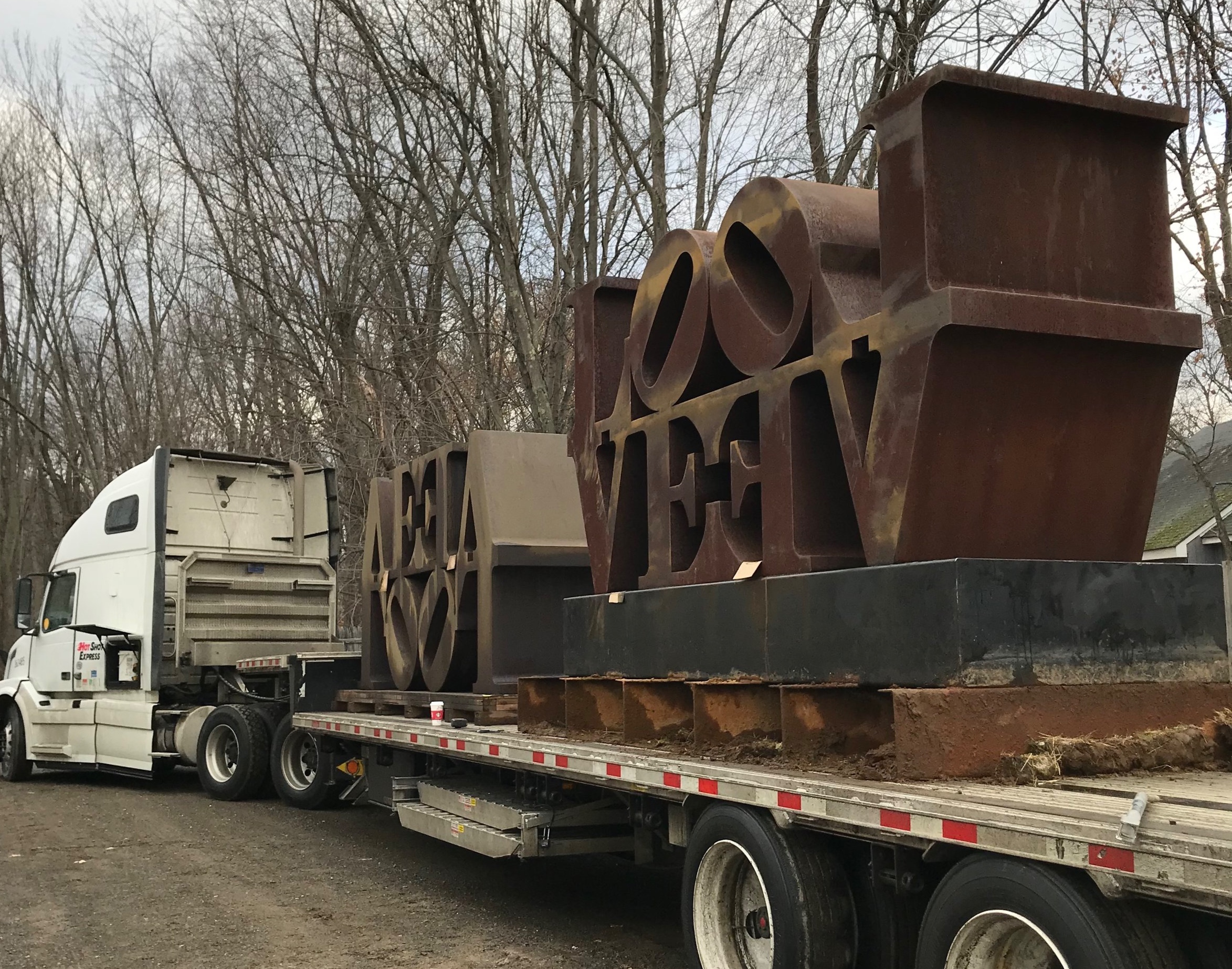
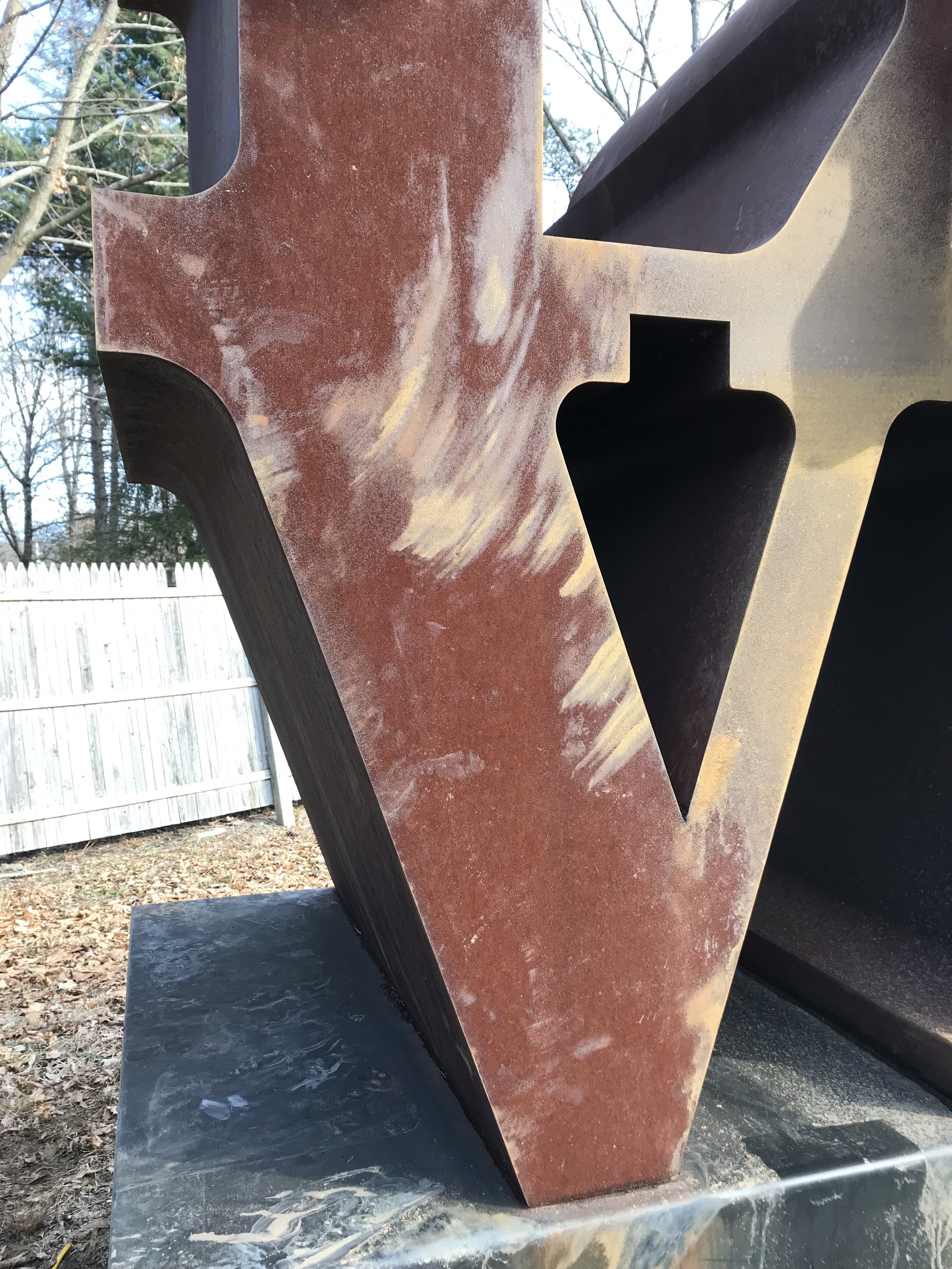
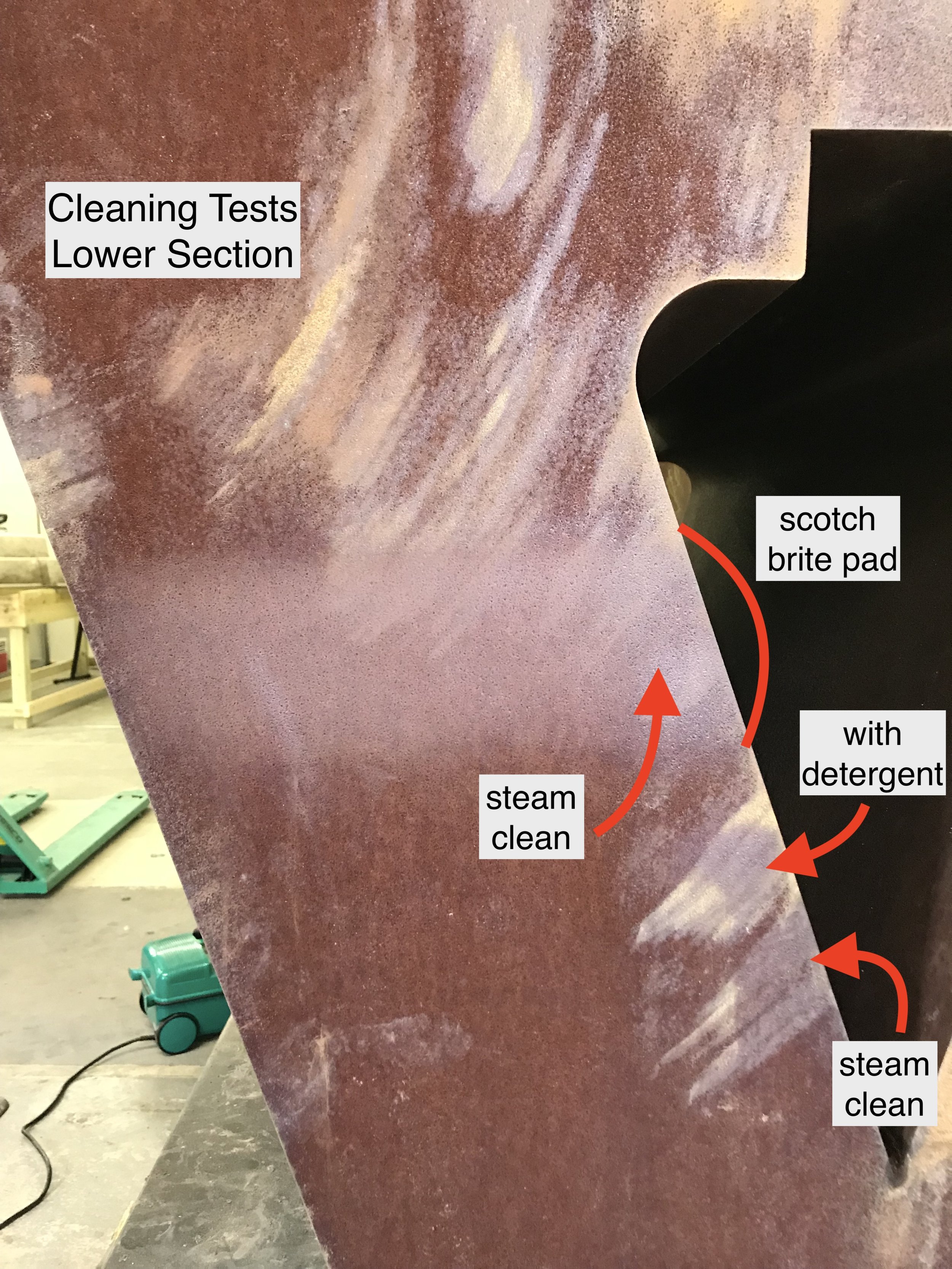
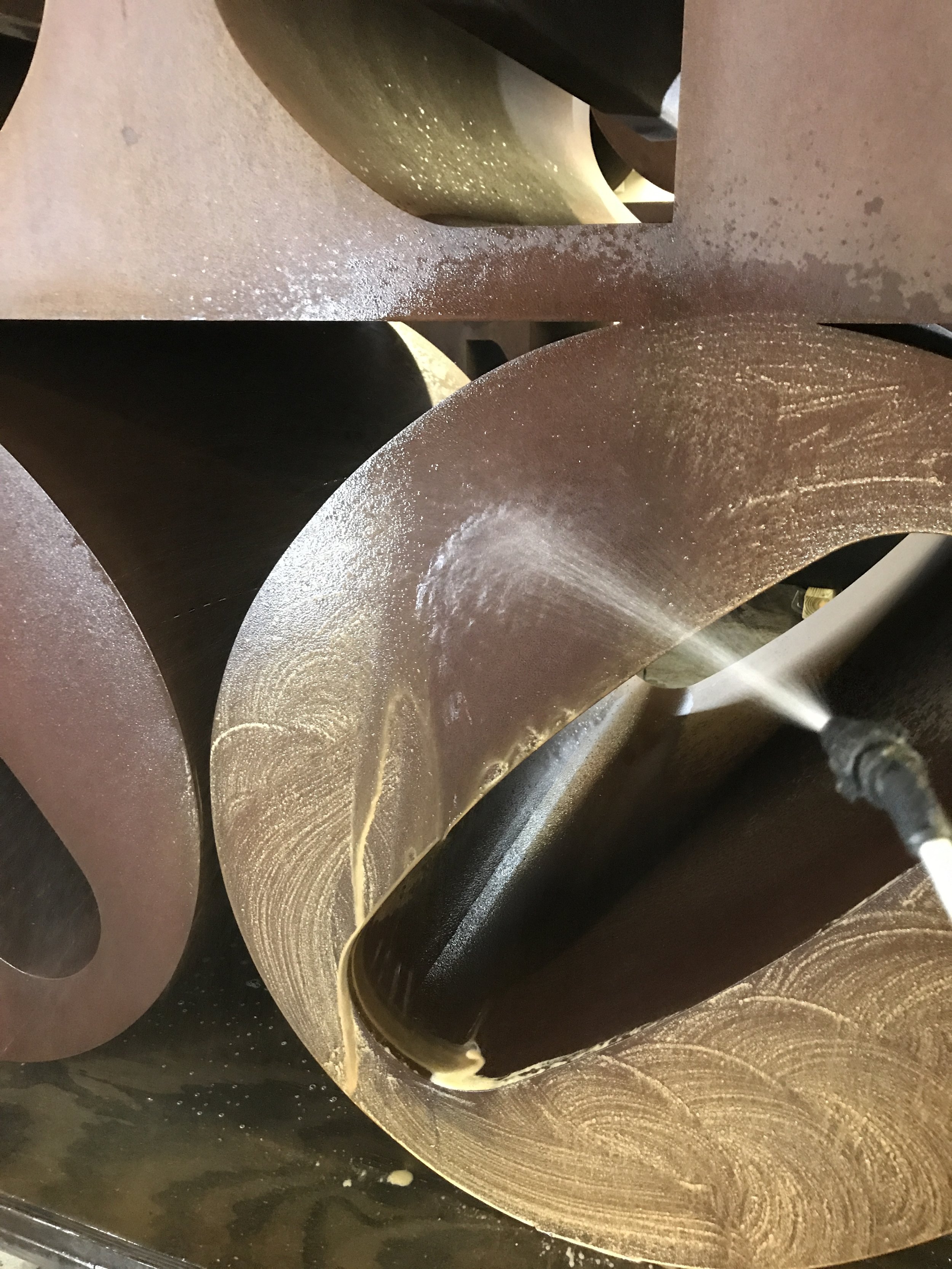
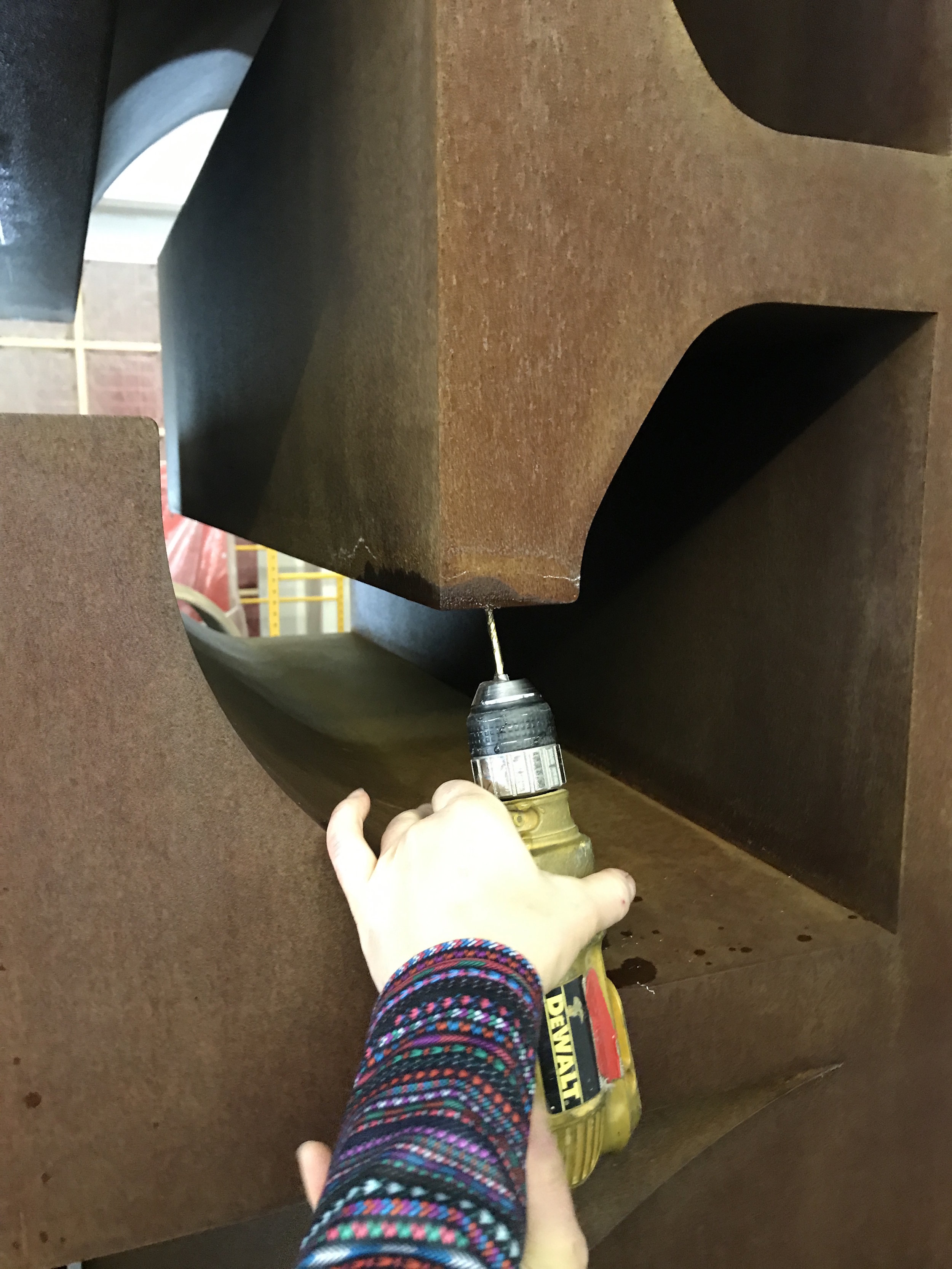
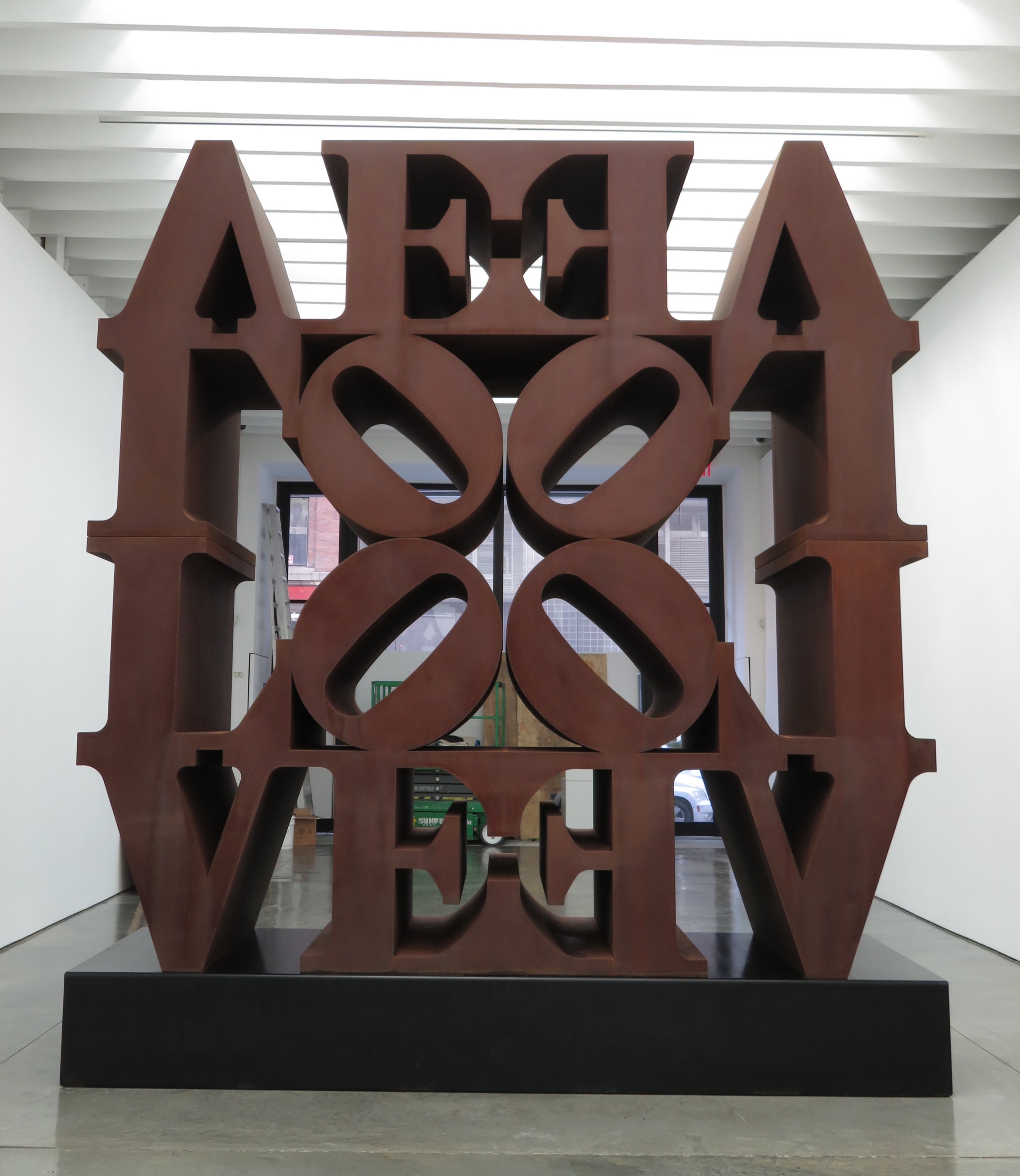
LOVE wall
Robert indiana
Robert Indiana’s LOVE Wall, 1963/2006, consists of Cor-Ten®steel and was damaged during deinstallation and transportation. Soiling was embedded in the still-developing corrosion crust and abrasions disfigured the surface. Through consultation with the artist’s representative, a treatment was developed to remove soiling and then start the process of “re-growing” the corrosion crust through thrice daily mist treatments over a series of weeks. During the course of treatment it was also discovered that the sculpture was retaining water and, with permission, weep holes were added to remove the water and allow future water to escape.